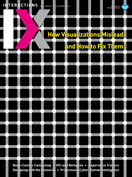Authors:
Danielle Szafir
Data visualizations allow people to readily explore and communicate knowledge drawn from data. Visualization methods range from standard scatterplots and line graphs to intricate interactive systems for analyzing large data volumes at a glance. But how can we craft visualizations that effectively communicate the right information from our data? What aspects of data and design need to come together to develop accurate insights? The answer lies in the way we see the world: People use their visual and cognitive systems (i.e., our eyes and brain) to extract meaning from visualized data. However, flashy visualizations are not always optimized to…
You must be a member of SIGCHI, a subscriber to ACM's Digital Library, or an interactions subscriber to read the full text of this article.
GET ACCESS
Join ACM SIGCHIIn addition to all of the professional benefits of being a SIGCHI member, members get full access to interactions online content and receive the print version of the magazine bimonthly.
Subscribe to the ACM Digital Library
Get access to all interactions content online and the entire archive of ACM publications dating back to 1954. (Please check with your institution to see if it already has a subscription.)
Subscribe to interactions
Get full access to interactions online content and receive the print version of the magazine bimonthly.






